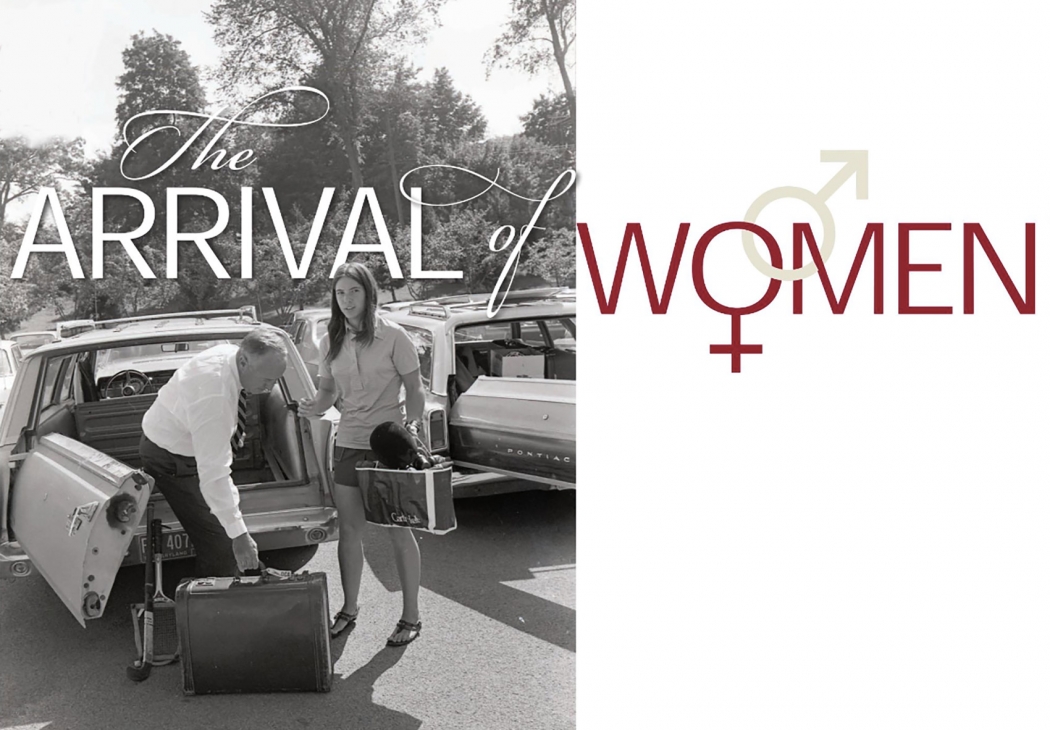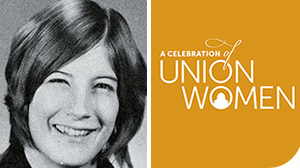Editor's note: This is the second in a series of articles this year commemorating the 50th anniversary of the admission of women at Union
The first woman admitted in the Class of 1974 was Katherine Stout of Guilderland, a suburb of Albany. Ranked near the top of her high school class and with strong SAT scores, her many extracurriculars included music, athletics and piloting sail-planes. Her father, Warren, was a member of the Class of 1950.
In 1980, she recalled, “I enjoy being in on new things, and [going to Union] was an adventure of sorts.” So, she applied, was accepted and relaxed and enjoyed the rest of her senior year.
As predicted, her first year was an adventure, exciting simply because it was her first year of college, not just because she was one of the first women on campus. Coming from a suburb, she enjoyed the diversity on campus.
She recalled that academics and housing were excellent. At the time however, athletics for women was limited to pickup games by the Nott with used equipment.
With a 3-1 ratio of men to women, there was pressure on the women, she said. “I’m afraid the retiring, non-social woman found it difficult to live in that situation.”
Of the 150 women who arrived on campus, the sense of isolation was perhaps most acute among the 25 transfers who found themselves in upper-level classes with very few other women. Cynthia Adams ’72, who transferred from Dean Junior College in Franklin, Mass., told the alumni magazine that at first she was hesitant to participate. But after she over prepared for an assignment and “scared some of the boys” she found it easier to relax.
Ann McNamara ’72, another transfer student, said that she arrived knowing that change would come slowly and that “we [women] would be expected to put up with a lot.” But she was energized by the role she could play in creating a new culture. “You could do just about anything you wanted with it,” she said. “The potential of that was so exciting that I was willing to put up with the other things.”
Near the end of her first year on campus, she said, “Now I feel extremely comfortable. I am a Union student, I do belong here and I have the same possibilities and potentials as anyone else.”
Barbara Michaela ’74, who arrived as a first year, may have been speaking for her classmates when she remarked, “Everyone makes such a fuss, but I don’t know why. I just came here and, you know, [coeducation] happened—it was here.”
Estelle Cooke-Sampson ’74, now a prominent radiologist, came to Union from Washington, D.C. to major in biology. Writing an account for the alumni magazine in 1971, she reported on a number of occurrences that made it clear what women were still in the minority: a health form designed for men, busloads of students arriving from women’s colleges, a professor who greets a co-ed class as “gentlemen,” a keg of beer for the dorm with the most blood donors. But she also noted improvements in club inclusion, dining choices and women’s residence halls that she said “will only produce a better and stronger Union College.”
Faculty: women had first names, and gumption
Byron Nichols, professor of political science emeritus, came to Union in 1968 and taught for 40 years.
He recalls that before coeducation, faculty and students showed mutual respect by addressing each other by “mister” (or “professor”) and last name.
The first women, who arrived before the common use of “Ms.,” were addressed as “Miss” and last name. Several weeks into the first term, a woman approached Nichols to insist that she be called by her first name.
Nichols consulted with fellow faculty who had received the same request and switched over to using first names for all students, who would continue to call him professor or mister.
“I was all in favor of going co-ed, but there was something to be said for making the assumption that students were going into adulthood. We lost that when faculty started calling students by first names, and they used our title.”
Jim Underwood, who taught for decades in political science before becoming dean of faculty and interim president, recalls that the first women at Union were strong students. “Coming into a place like this, these women had to have some gumption,” he said. “They were really strong women.”
After women had arrived, Underwood said, “it was like things had always been this way.”
Arriving at a tumultuous time
Kay (Stout) Van Woert ’74, the first woman admitted to Union, recalls that women arrived at Union at a tumultuous time with protests of the Vietnam War and civil rights.
“Conversations with fellow students on the left and right and interesting discussions with faculty in and out of class helped further develop my critical and strategic thinking and opinions,” she said.
She also recalls the annoyance and amusement caused by a some-times patronizing administration. “The very short tenured Dean of Women was far more concerned with ‘protecting our morals’ by keeping men out of our dorms than with our access to education or activities. The college was shocked that an exercise class consisting mostly of jumping jacks was not adequate to address our interest in athletics. The administration tried to remediate by providing us very used field hockey sticks cast off from the local Mt. Pleasant High School for pick-up games next to the Nott.”
But Union got something right, she said. “For the times, our first group of women did have some geographic, economic, racial, religious and even international diversity. Conversations and friendships, then and since, certainly contributed to my fabulous education at Union.”
Kay retired after a career with the New York state budget office and later as a policy analyst and advocate for family services in Vermont.


